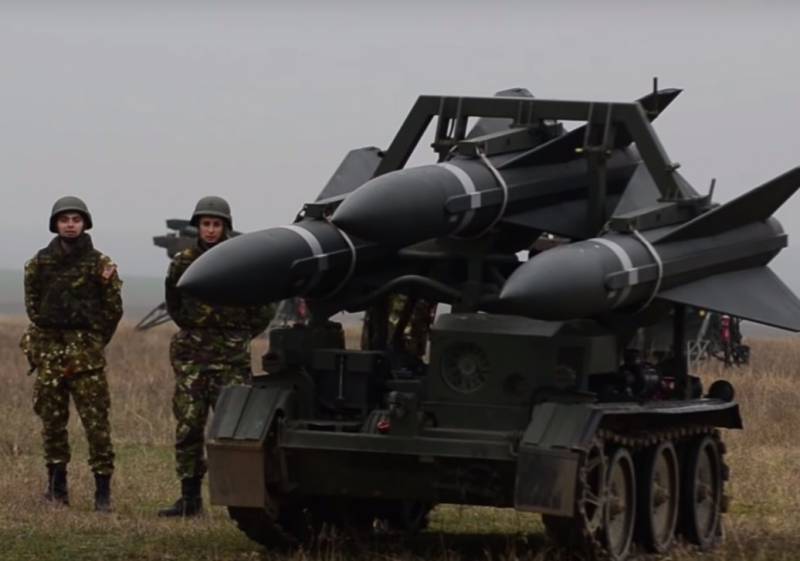Air defense of the countries of the eastern flank of NATO: formidable force or the illusion of security
Eastern Europe is a peculiar frontier of Russia and the West. Therefore, the NATO bloc pays great attention to protecting its eastern borders, including from the air. But can the air defense forces of Eastern European countries be considered effective?
In Eastern Europe, NATO has two key areas. The first - the Baltic - includes Poland and the Baltic countries. Given the small number of Baltic armies, the main defense link in this direction is Poland. It was here that the alliance held air defense exercises on June 3–19, 2019 with the participation of Poland, the USA, Great Britain, Romania, Slovakia, the Czech Republic, Germany, and the Netherlands. Before the exercises, agreements were reached between Washington and Warsaw on the supply to Poland of 16 Patriot anti-aircraft missile launchers, 208 missiles and 4 radars for a total of $ 10 billion.
US Patriot air defense systems should strengthen Poland's air defense. But in reality their supply is virtually useless. Since Warsaw considers Russia to be the main potential enemy of Poland, it is worth noting immediately that from the Russian weapons installations with a range of up to 70 km cannot protect Polish territory.
Now the United States is completing the construction of a base for the deployment of missile defense in Redzikovo, but this decision makes Poland one of the main targets for Russian missiles in the event of a conflict. But the Americans do not want to give protection to the actually Polish cities and settlements, and they hardly can. It is no coincidence that many users are very skeptical in the Polish segment of the Internet.
- writes the Polish commentator.
In 2020, the United States is going to allocate $ 50 million to strengthen the air defense forces of Estonia, Latvia and Lithuania. It is ridiculous to talk about any real defense capability of these small states in the event of a conflict with Russia. However, in October 2019, the heads of the military departments of Estonia, Latvia and Lithuania signed an agreement on the creation of Baltnet, the control center for the unified Baltic airspace control system. In rotation, each of the three states will carry out the tasks of organizing control over airspace, for which the republics have at their disposal radar stations.
As for the air defense system itself, it remains extremely weak in the Baltic countries. In Latvia - the air defense battalion in Zemessardz and the air defense division in the air force, in Lithuania - the air defense battalion, in Estonia - the air defense battalion in the ground forces and the air surveillance division in the air force. Therefore, the Baltic republics are constantly asking "senior comrades" to place NATO air defense systems in the Baltic states.
SAM S-300PM1 are in service and missile brigade of the Air Force of Slovakia. The Czech Republic has only one 25th anti-aircraft missile regiment with 4 batteries of upgraded Cube air defense systems, 2 RBS-70 short-range air defense batteries and 2 Strela-10M short-range air defense batteries. In 2020, instead of Strela-10M, the RBS-70NG manufactured by Saab Dynamics AB will appear in service with the Czech air defense forces.
In the southeast direction, the main link in the NATO air defense system is Romania. It is here, in Devesela, that the American THAADs are already deployed, and a missile defense base is equipped. In the armed forces of Romania, the main combat unit of air defense is the 1st anti-aircraft missile brigade them. General Nicolae Desquelescu, part of the country's Air Force. The brigade is armed with 6 Soviet S-75M3 Volkhov air defense systems and 8 American Raytheon MIM-23 Hawk XXI air defense systems. It is clear that in this case as well the air defense means are clearly not enough to repel the blow of such a serious adversary as Russia. The Bulgarian air defense forces, also combined into an anti-aircraft missile brigade as part of the Bulgarian Air Force, have 10 S-300 air defense systems, the S-200 air defense division, and the Osa air defense system.
As you can see, the state of the air defense forces and means of the countries of Eastern Europe leaves little chance of confrontation with such a serious adversary as Russia, which NATO is constantly talking about. However, these countries are hardly capable of providing cover for their airspace and from aviation and missiles of less powerful states.
Therefore, it remains only for the countries of Eastern Europe to rely on US assistance and insist on strengthening the American military presence and the deployment of new military facilities. Only such a policy creates even greater risks for the country's airspace: in the event of a conflict, Russian missiles will first fly to US bases in Poland and Romania.

Information